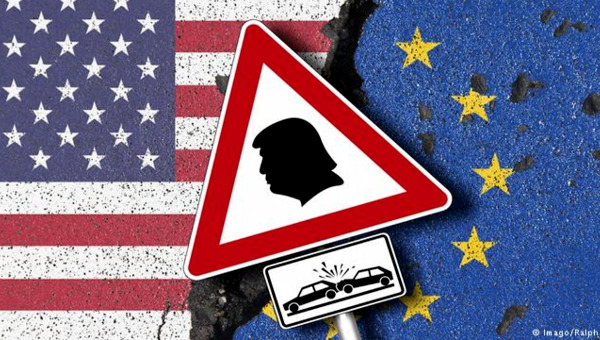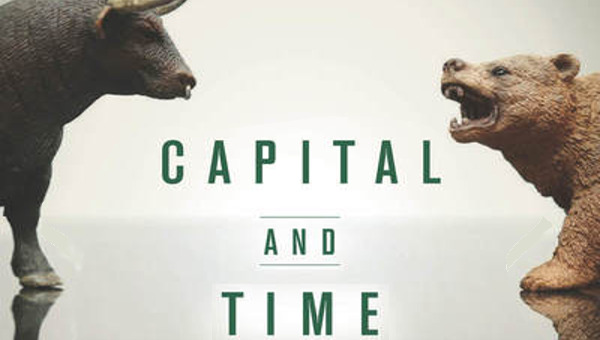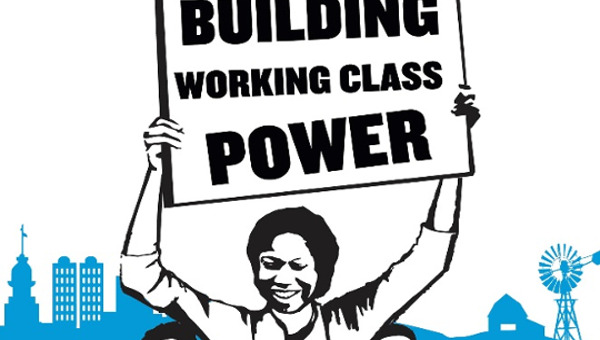Comparing Crises: The 1930s, the 1970s, and Today
Boom or bust, Wall Street keeps people busy. Everybody debates the U.S. government’s $700-billion bailout plan these days. After the bankruptcy of the Lehman Brothers investment bank, who’s next was last week’s big question. Last month, it was speculation whether falling oil prices and a resurgent U.S. Dollar would indicate the next boom. Last year, we were where we are now: fearful considerations whether financial turmoil would push the U.S. and world economies into recession. Over the course of the year, oil prices hit record highs ($143.73 per barrel in July), the U.S. Dollar hit record lows ($1.60 per 1 Euro in April) and the former flagship of U.S. finance capital – investment banking – went completely under.
Bear Stearns and Merrill Lynch were taken over by JP Morgan Chase and Bank of America respectively. Unlike investment banks, the latter two are commercial banks. This means they are subject to bank regulation and can refinance their business through central bank money instead of issuing and selling securities on capital markets as investment banks do. Goldman Sachs and Morgan Stanley sought the Federal Reserve Bank’s shelter after Lehman Brothers went unprotected down the capital market drain. The disappearance of investment banking in the U.S., and global financial instability more broadly, was accompanied by government and central bank intervention in Washington, Frankfurt, Tokyo and London. Large-scale bailouts and government takeovers of financial and mortgage companies, Fannie Mae, Freddie Mac and AIG being the most prominent but by no means the only cases, along with public spending packages prompted disgruntled comments from fiscal conservatives who see the U.S. marching into socialism. These folks must have a hard time, really.
A Crisis of Ideas:
Neoliberalism, New Keynesianism, Socialism
In the late 1940s, neoliberal mastermind Joe Schumpeter gave the American Economic Association a wakeup call by portraying economic development as an unstoppable ‘march into socialism.’
[1] Milton Friedman pulled a number of Schumpeter’s younger disciples together to train cadre who could become, and as it turned out since the 1970s really were, a vanguard of the neoliberal project that was meant to engineer a u-turn on the socialist Road to Serfdom.[2] These cadres would lead mankind back to the realm of freedom, entrepreneurial spirits, private property and profit. Along with many other leading political and economic figures, George Bush’s Treasury Secretary, Hank Paulson, the architect of today’s $700 billion bank bailout, and Robert Rubin, one of Barrack Obama’s key economic adviser and a former Treasury Secretary under Bill Clinton, were brought up as members of that vanguard.
Rubin earned an economics degree from Harvard in 1960 before he started a career as Wall Street banker and politician. Paulson missed a solid neoliberal education as he earned a BA in English from Dartmouth College in 1968, but shares Rubin’s dual character as Wall Street banker and politician. Biographies like these are fairly common in today’s political class. The critical question, however, is: what caused these character masks of neoliberal capitalism to turn to state intervention? Did they fell prey to chief central banker Ben Bernanke who, instead of serving Wall Street as a man of practice, spent much of his career studying the Great Depression of the 1930s at Stanford and Princeton Universities before he became Governor and later Chairman of the Fed? Has the self-confidence of conservatives and neoliberals taken such a blow from the current crisis that they desperately grasp a Bernanke New Keynesian straw?[3]
Probably not. As an academic fashion of the last two decades, New Keynesianism updated neoliberal economics from the fairly naive ‘perfect information version’ to the more realistic version that assumes incomplete and unevenly distributed information among market agents. As a guide to economic policies, this kind of thinking was adopted during the heyday of neoliberal capitalism in the 1990s under Clinton.
In the 1990s, Joe Stiglitz, the most prominent advocate of the New Keynesianism, first became Clinton’s chief economic adviser and then the World Bank’s chief economist. It was only than that he started to blend his New Keynesian economics with social democratic political ideas, an undertaking that soon cost him his job. New Keynesianism had firmly established itself as the most applicable version of neoliberal policy-making. Lawrence Summers, who was Rubin successor as Clinton’s Secretary Treasurer and the driving force behind Stiglitz’s ousting from the World Bank, as well as Greg Mankiw, who was Bush’s chief economic advisor from 2003–05, also adhere to the New Keynesian branch of neoliberalism.
The unacknowledged fear of hardnosed conservatives is that neoliberalism, after turning its long-time competitor Keynes into a subordinated branch of its own intellectual world, will make socialism the only available policy alternative in times of severe crisis. Such an implication may take socialists by surprise. Many socialists have hardly finished their analysis of the rise of a transnational capitalist class and neoliberal hegemony, drawing the conclusion that finance capital has emerged as dominant. And now this all-powerful historical bloc is supposed to be falling apart? Isn’t there good reason to believe that conservative fears about an end to neoliberalism are vastly exaggerated?
Financial turmoil and an economy on the verge of recession are not necessarily a reason to loose faith. Financial troubles shook Wall Street in 1987, 1990, 1998 and 2001–03. Only the financial turbulence of 1990 and 2001 were accompanied by recession. Compared to the profound crises that have shaken almost every other part of the world since the rise of neoliberalism, the U.S., and its friends in Canada and Western Europe, have had a relatively quiet time.
Even now, it is by no means certain that a recession will hit. U.S. gross domestic product growth was negative in the fourth quarter of 2007 (-0.17%), it barely reached 0.87% in the first quarter of 2008 but jumped to 3.27% in the second quarter. Yet, unemployment also jumped, from 4.9% in January to 6.1% in August. This latter development, however, could simply indicate that businesses in the U.S. got rid off their least productive workers and thus paved the way for a recovery based on increasing productivity. As well, as a consequence of the financial crisis, firms may also have been freeing themselves from burdensome debt and deflated paper wealth.
Is there a reason to revive Schumpeter’s fear – which was once the hope of socialists – of marching into socialism? Or are we witnessing another round of ‘creative destruction,’ which Schumpeter recognized as the innovative law of motion of market economies?
In an attempt to answer this question it may be revealing to compare the current crisis not to its fairly mild predecessors in this period of neoliberalism, but to the rough rides of the 1930s and 1970s. The reason for this intellectual journey through the past is threefold. (1) Economically: the current crisis has a much more profound effect on financial institutions than any crises since the 1970s. Though Wall Street has seen financial turmoil since then, it also proved to be a safe haven for international capital seeking refuge from financial meltdown in other parts of the world. (2) Politically: the Fed cut its lending rates since the outbreak of the current crisis in the summer of 2007 as aggressively as it did in 1990 and 2001. In the two latter cases, these cuts translated into lower market rates that helped to lubricate the domestic and international circulation of capital. Currently, banks keep market rates up and thus credit-supply to the non-financial sector short.
(3) Ideologically: the state did not retreat from economic intervention after neoliberalism replaced Keynesianism as the dominant ideology. But neoliberal ideology covered up this intervention by talk of the necessity of adapting to globalization and the new economy. This façade of the neoliberal state is now dropped as it openly re-funnels tax dollars into the coffers of propertied classes.
The 1930s: Crisis of a Looming Superpower
The Great Depression that followed the stock market crash of October 1929 came after the U.S. just had started to dominate the world’s politics and economy. In 1918, it was then-president Wilson who suggested capitalist internationalism, led by the U.S., as an alternative to the proletarian internationalism that just was spreading from St. Petersburg and Moscow to Berlin, Vienna and Budapest. Neither the British nor the French, exhausted from the war and confronted with a rising tide of working class militancy, had the power, courage and imagination for such a farsighted undertaking. A few years later, capital imports from the U.S. contributed to the, albeit modest, recovery of European economies. However, at that time the U.S. was not able yet to shape the capitalist world after its own image. Not all factions of the U.S. bourgeoisie shared Wilson’s project of American internationalism. There were still those who weren’t interested in world, at least not in European, politics and others who thought the quest for U.S. hegemony was premature.
On the other side of the Atlantic, the British ruling class, though seriously weakened by rising competition from the U.S. and Germany and also the costs of war, was still clinging to its Empire and the idea of being the world’s leader. This is the situation that the Italian Communist Gramsci aptly described as one where one class, the British bourgeoisie, was no longer able to exert hegemony, and another, the American bourgeoisie, was not yet able to do so. This ‘hegemonic vacuum’ became apparent when British and American central bankers failed to cooperate in containing the October 1929 Wall Street crash. As a result of this non-cooperation financial meltdown did not only trigger a crisis but could cause a drying up of credit along with competitive devaluations that destroyed the world market. Today’s situation is very different. Central banks in the financial centres of the world do cooperate, but their impact on stabilizing the international circulation of capital is more limited than it has been at any time since the 1970s. This does not indicate a hegemonic vacuum but the hollowing out of U.S.-led capitalism.
There are also other aspects that distinguish the current crisis from the 1930s. The financial crisis of 1929 led into a depression because circulation had proven to be the weakest link of the process of capitalist accumulation and because politics had failed to fix that link. In the course of the depression, however, a set of factors evolved that eventually established U.S. hegemony. The first was a wave of labour unrest in the new mass production industries that led to industrial unionism and the New Deal. The second was the rise of Nazi Germany, which proved that the German bourgeoisie was not able to contain the labour movement by itself but had to seek the support of a radicalized middle class that had economically been destroyed by the depression. At the same time, European powers, notably Britain and France, proved to be unable to stop Nazi aggression and the ‘threat’ that was represented by Communist Parties and the Soviet Union.
The internationalist faction within the U.S. bourgeoisie used these domestic and international factors to forge a welfare and warfare economy.[4] Unions, many of them built and led by communists, were first drawn into the struggle against fascism, which, based on the idea of a totalitarian identity between Hitler-Germany and Soviet-Russia, was then continued as anti-communist crusade. This became possible economically because mass production techniques and Keynesian demand management helped to turn a war economy into a money making machine.
Whereas the British Empire and Germany’s attempts of empire building suffered from the economic costs of war, the U.S. was able to push this burden to a considerable extent onto its allies, including Britain. Moreover, mass production in vertically integrated companies proved to be more productive than the ways production was organized in other countries. This competitive edge allowed U.S. companies to pay their workers higher wages without causing a profit squeeze and to become a role model for capitalist production in other countries.
None of these factors applies today. The financial crisis and the escalating tax burden of wars[5] that can’t be won and, more recently, the bailouts of failed financial companies hit working and middle classes in the United States. Treasury Secretary Paulson’s attempt to share the burden of the financial crisis with the U.S.’s G7-partners has been a non-starter. His colleagues simply declared the crisis to be an American problem, and continue to assemble smaller versions of bailout packages in their respective home countries. More generally, the war economy isn’t an engine of growth any longer and U.S. corporations don not enjoy the same margin of advantage in efficiency they once held and in many sectors are now lagging. To understand why the leader of the capitalist pack is so much less glamorous and successful today than it has been during and after WW II we have to look at the turbulent 1970s.
The 1970s: Crisis of Transition from Manufactured Hegemony
to Pentagon Wall Street Capitalism
Cracks in the U.S. model of capitalism became apparent in the 1970s. Domestically, civil rights and women’s movements protested against their subordinate position in the American Way of Life. Workers of all colours and both sexes rebelled against the degradation of work, speed-ups and the inflationary hollowing-out of their wages’ purchasing power. Though similar movements appeared in all capitalist centres, the U.S. was particularly hard hit because it was also faced by the competition from the rising export power houses Germany and Japan and the escalating war effort in Vietnam that, for the first time since WW II, proved to be a drag on the economy instead of being a growth stimulus. Neoliberalism was the response to these challenges.
The black civil rights movement was, along with brutal repression of its radical wing, namely the Black Panthers, neutralized by allowing a small number of blacks to become middle class and an even smaller number to rise to leading position within the U.S. bourgeoisie. The majority of African-Americans, though, remain at the bottom of U.S. society and they increasingly compete with immigrant, particularly Hispanic, workers for good blue-collar jobs as well as low-paying ones. The same divide and conquer tactics were used to neutralize the women’s movement: some moved into middle class positions and while economic pressure on the rest increased as maintaining standards of living required longer hours at work. The bargaining power of unions was undermined by relocating companies to southern right-to-work states within the U.S. or to capital-friendly locations overseas.
Offering cheap credit to everybody but the most desperate underclass, and a surge of cheap imported consumer goods, softened the full effect of these attacks on labour and living standards. Taken together, these two factors contributed to the rise of Pentagon Wall Street Capitalism.[6] Cheap credit, complemented by the accumulation of financial, mostly fictitious, assets, turned Wall Street into the hub of world capitalism’s circulation processes. This did not only allow the reaping of enormous profits from financial activity, but it also turned claims for such profits into an effective weapon to enforce the relocation and reorganization of production processes. The result was not only a higher rate of surplus value, though still not high enough to satisfy Wall Street’s appetite for financial gain, but also the emergence of global supply chains.
Managerial will alone was not enough to set up such supply chains. They required political support that would open up foreign markets and protect private property. Though this could partly be accomplished through diplomatic pressure and trade deals from NAFTA to the World Trade Organization, the U.S. military-industrial complex has always been the last resort of such efforts. The ensuing accumulation by possession caused crisis and hardship in many countries of the world, but it also allowed the U.S. to maintain social peace on its home front. Financial crisis overseas regularly led to capital flight to Wall Street, which has been perceived as a safe haven, particularly from the financial turbulences of the 1980s and 1990s. Thus, the accumulation of paper wealth could go on. Industrial restructuring, fiscal consolidation and privatization, which the International Monetary Fund prescribed as remedies to financial turmoil, put more assets under the command of Wall Street and more cheap consumer goods onto the shelves of U.S. shopping malls.
The End of Pentagon Wall Street Capitalism?
Pentagon Wall Street capitalism rested on two beliefs. First, that the U.S. military would be able to protect private property anywhere on earth. Second, that the dollar would be a reliable store of wealth. In the 1970s, the U.S. bourgeoisie could restore these beliefs, which were shaken by the defeat of the U.S. Army in Vietnam, Dollar depreciation after the abandonment of the Bretton Woods system of fixed exchange rates and domestic inflation, through a determined move to neoliberalism and aggressive foreign policies. This move promised more effective profit and property protection than the wavering policies of many European countries whose leaders were still seeking compromise with the leaders of unions at home and developmental states in the periphery.
Thirty years later the belief is gone. Though U.S. foreign policies are more aggressive than ever and government efforts to prop up Wall Street are reaching unprecedented levels, the results are mortifying. In Afghanistan and Iraq the world’s largest military proves that it can destroy regimes that it declares – most often unilaterally – inhumane and undemocratic. But the U.S. also proves that it can’t contribute to the establishment of a free market society in its own image. On Wall Street, investor confidence can’t even be restored by the injection of enormous amounts of central bank money and tax dollars. Moreover, many working and middle class folks are confronted by the loss of jobs, pension plans and houses. The ‘American Dream’ is over for them. The U.S. has ceased to be a role model for international capitalism. The reason that they are still in the driver’s seat is that there are neither alternative models of capitalism that could establish a new capitalist hegemony nor oppositional movements that could claim to represent a non-capitalist future.
German finance minister Steinbrück received considerable media attention when he stated a couple of days ago that the U.S. is going to loose its “financial superpower status.”[7] Governments in other countries express similar sentiments. Considering the arrogance that U.S. governments and Wall Street bankers displayed before the current crisis broke out last summer, a bit of schadenfreude in other countries is understandable enough. It doesn’t mean much, though. In no other country, or group of countries, governments and capitalists are anywhere near to inventing an alternative to the dwindling Pentagon Wall Street capitalism. Accomplices of the U.S. Empire that they were, and still are, they are busy trying to contain the effects of the U.S.-triggered crisis on the countries they rule. The Brits are still grappling with the fall out from the Northern Rock debacle last year; the Germans are struggling with the losses of IKB; ruling classes around the world are preparing for a recession. Unlike during the crises in the early 1990s and 2000s, they are not bragging about a quick recovery. Instead of that, they paint a pretty bleak picture of the future, preparing subordinate classes for an onslaught on their working and living conditions.
So far, there hasn’t been much reaction on the side of unions and other social movements. Stuck to the idea of omnipotent financial markets, it is difficult to adjust to a situation in which the confidence of those who presented themselves as master of the universe until very recently is deeply shaken. The New York City Labor Council has just organized a rally on Wall Street to protest against Paulson’s generous bailout of the rich at the expense of the not so rich and poor.[8] This may have been just a symbolical act, but it points into an interesting direction: Main Street folks reclaiming, and hopefully changing, Wall Street, Bay Street and other financial centres around the world. Money doesn’t make the world go round, workers do. •
Notes
1.
J.A. Schumpeter (1949). “The March into Socialism,” in Capitalism, Socialism and Democracy London 1976.
2.
F.A Hayek (1944). The Road to Serfdom Chicago 1994.
3.
The term New Keynesianism became popular among economists after the publication of two volumes of
journal articles written by, among others, Ben Bernanke, Lawrence Summers, Joseph Stiglitz and
Gregory Mankiw. See: N. G. Mankiw and D. Romer, eds. (1991). New Keynesian Economics, 2 volumes, Cambridge, MS.
4.
P.A. Baran and P.M. Sweezy (1966). Monopoly Capital: An Essay on the American Social Order New York.
5.
J. Stiglitz and L.Bilmes. (2008). The Three Trillion Dollar War: The True Cost of the Iraq Conflict New York.
6.
I. Schmidt (2008). “Aufstieg und Fall des Pentagon Wall Street Kapitalismus” Sozialismus, June.
7.
“US will loose financial superpower status,” Financial Times, September 25, 2008.
8.
“Union leaders denounce bailout plan,” New York Times, September 25, 2008.





